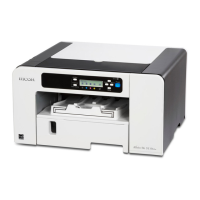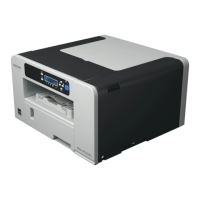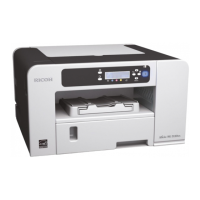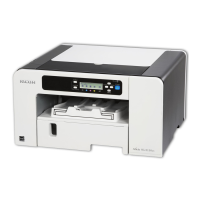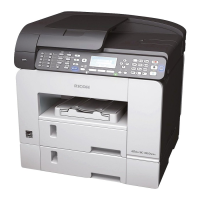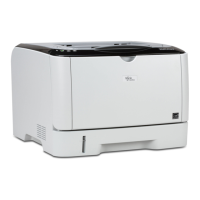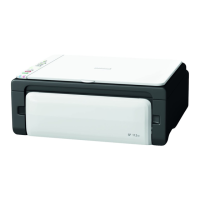Glossy paper
• The time it takes for the ink to dry depends on the kind of printed image and the environmental
conditions. To ensure water and oil resistance, leave the printed sheet to dry for about a day.
• If the temperature exceeds 25°C (77 °F) or the relative humidity exceeds 50%, problems with
continuous feeding of glossy paper might occur. If this is the case, feed the sheets one by one.
• If you load multiple sheets of glossy paper and they do not feed in properly, feed them one by
one.
• Ink smearing can be caused by environmental conditions (such as high humidity) and the type
of image being printed (such as ink-heavy images). If smearing occurs, set [Select Print
Quality:] to [Quality Priority] or [Speed Priority]. This may stop the ink smearing.
• Roller marks might appear on printed images.
• If paper is fed from the bypass tray, roller marks might appear on the printed image.
• Some print images can cause the paper to curl, which creates patchy print. If this happens, set
[Select Print Quality:] to [Quality Priority].
• Duplex printing is not supported.
• When using these sheets, see the instructions supplied with them.
Envelopes
• Up to 20 envelopes can be loaded in Tray 1.
• Flatten envelopes.
• Load envelopes carefully, because the printable area depends on the orientation. See
page 98 "Printable area".
• Duplex printing is not supported.
Thick paper
• Thick paper is heavier than 157 g/m
2
(42 lb.).
• You can insert paper with weights up to 256 g/m
2
(68 lb.) into the bypass tray.
• Insert paper with the print side face up into the bypass tray.
• Duplex printing is not supported.
• The ink may smear depending on the type of image. See page 239 "Print Results Are Not
Satisfactory".
Non-compatible paper
• wrinkled, folded, or damaged
• wavy at the ends
• curled
Paper
97

